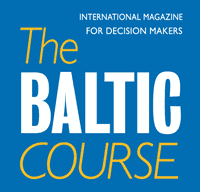Analytics, Energy, EU – Baltic States, Latvia
International Internet Magazine. Baltic States news & analytics
Tuesday, 29.04.2025, 07:40
European project SELINA – standby and off-mode energy losses
 Print version
Print version
According to the IEA, by 2030, 15% of the total appliance electricity consumption in Europe could be caused due to standby functions.
 |
|---|
In year 2009 an Intelligent Energy Europe Programme project SELINA has started. SELINA stands for Standby and Off-Mode Energy Losses in New Appliances Measured in Shops.
This project aims to characterize the standby and off-mode power consumption for new electrical and electronic household and office equipment on the EU market. For this goal, a specific methodology for measuring in shops has been developed. Measurement campaign is taking place in shops and warehouses in 12 European countries. In total, 6000 appliances are measured in the framework of the project.
Technology development in electronic and energy consuming equipment field demands providing of informational flow between policy makers and producers regarding the chosen policy trends (t.i. selected standards, forecasted power consumption, etc). SELINA project is meant to fulfill this need and provide clear information regarding standby consumption.
During the project implementation in Latvia standby and off mode energy consumption measurements were performed for 31 categories of equipment in cooperation with PTA household appliance store in Riga. The results of the preformed measurements are shown in figures 2 and 3.
In January 2010 the EC Regulation (EC 1275/2008) on standby and off-mode electric consumption of electrical and electronic household and office equipment applied. This law prohibits a standby consumption higher than 2W and off-mode consumption for all electrical appliances on the market. In the second phase (2013) this limit will be lowered to a maximum of 1W for standby mode and 0,5W for off-mode.
Figure 2 shows that all except one measured equipment categories comply with limits of both years 2010 and 2013. These results prove that directive implementations will not bring along complications for equipment producers regarding the compliance with the directive in off-mode. At the same time analysis of standby mode measurements (see figure 3) clearly showed that there might be problems to comply with the directive.
The figure above shows measurement results for electronic and energy consuming equipment in standby mode. Three categories of equipment exceed requirements for energy consumption level introduced in year 2010. Though, only half of all measured categories will comply in terms of energy consumption in standby with the requirements to be introduced in year 2013. This means that producers of equipment will have to introduce special measures to improve energy efficiency of standby mode until year 2013.
Results of the measurements are summarized in the figure 4 where all equipment is shown that does not comply with requirements for energy consumption in both modes of both legislative stages.
Summary of the measured data shows that 98% of the measured in off-mode devices confirms with the requirements introduced in year 2020, and 92% – to the requirements to be introduced in year 2013. In standby mode measured equipment meets the requirements of 2010 for 94%, and requirements of 2013 – for 67%. This means that producers will have to work hard to provide necessary off-mode values for 10% of all available equipment and for standby values for 49% of equipment available for sale.
The information gathered during the measuring campaign is be used to create a database of the trends in energy use for each product type. The data base will become a major tool for policy makers to define future policies and regulations. Another aim of the SELINA project is to propose a representative “basket of products” for which standby and off-mode power levels can be measured and tracked in any country around the world. This will allow an international comparison of similar products. Moreover stakeholders will become more aware of the amount of power consumption during stand-by of off-mode. On the long term similar future measurement campaigns can demonstrate the effectiveness of the policy mix used in individual countries and promote products that meet the standby power challenge.
SELINA is being implemented in 12 European countries – Latvia, Portugal, Germany, France, Denmark, Romania, Check Republic, Belgium, United Kingdom, Austria, Greece, and Italy. Also, major non-European organizations are involved in the project: International Energy Agency, United States Environmental Protection Agency, Energy Star, Australian Standby Initiative, and Swiss Federal Office of Energy.
In Latvia project is implemented by Ekodoma, Ltd – www.ekodoma.lv
More information about the project is available on the home page – www.selina-project.eu








 «The Baltic Course» Is Sold and Stays in Business!
«The Baltic Course» Is Sold and Stays in Business!

